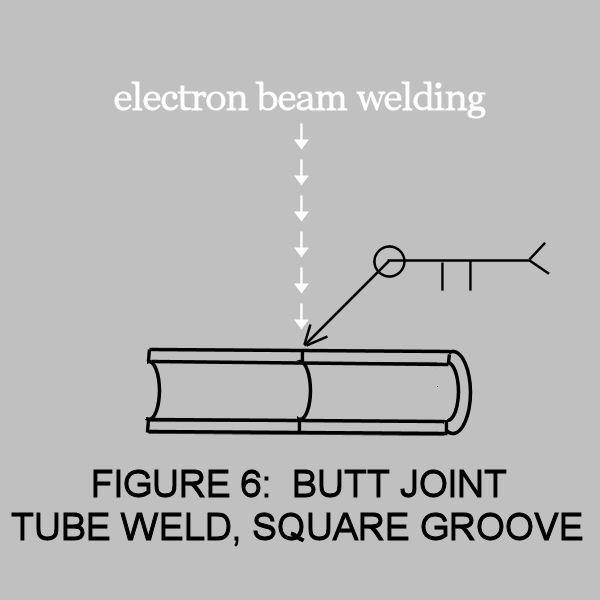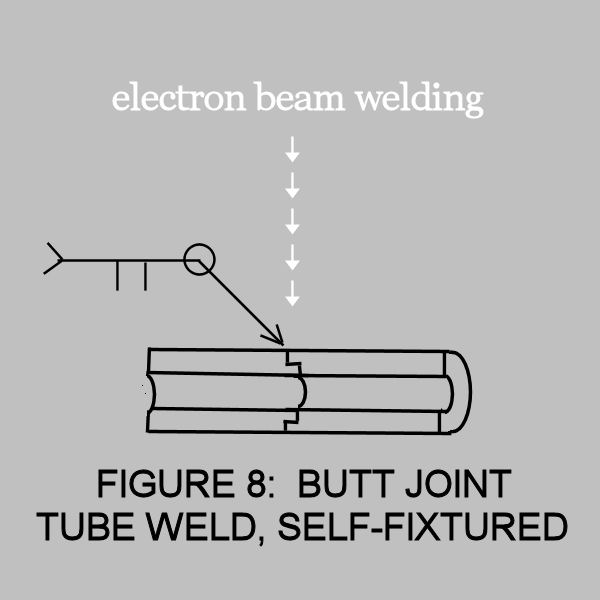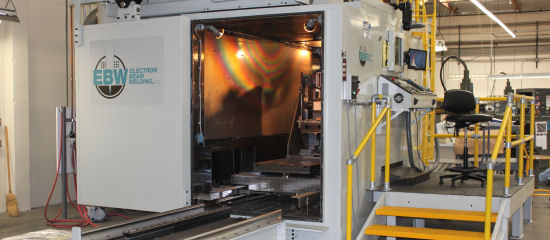TUB WELDS for ELECTRON BEAM WELDING
"TUBE WELDS" FOR ELECTRON BEAM WELDING
FIGURE 6

The most direct approach to welding tubular sections is illustrated in Figure 6.
Fit-up is critical, and fixturing is important to avoid misalignment and concentricity problems.
A lower power tacking pass with the electron beam helps to maintain alignment prior to a full penetration pass.
"TUBE WELD, SELF-FIXTURED JOINT" FOR ELECTRON BEAM WELDING
FIGURE 7, EXAMPLE 1

When joint alignment is critical, the design shown in Figure 7 provides concentricity without the need for elaborate tooling.
A tight slip fit to an interference fit is recommended for proper welding.
"TUBE WELD, SELF-FIXTURED JOINT" FOR ELECTRON BEAM WELDING
FIGURE 8, EXAMPLE 2

Figure 8 illustrates another variation of the self-fixtured joint that has the feature of a smooth bore for fluid systems that cannot tolerate flow restrictions.
The step typically is on the order of 0.010”.
The step must be consumed by the narrow electron beam, therefore any steps much greater than 0.010” will
require larger than desired beam diameters and can risk "missed joint" type lack of fusion defects. Scribe lines are used to locate the internal weld joint.







